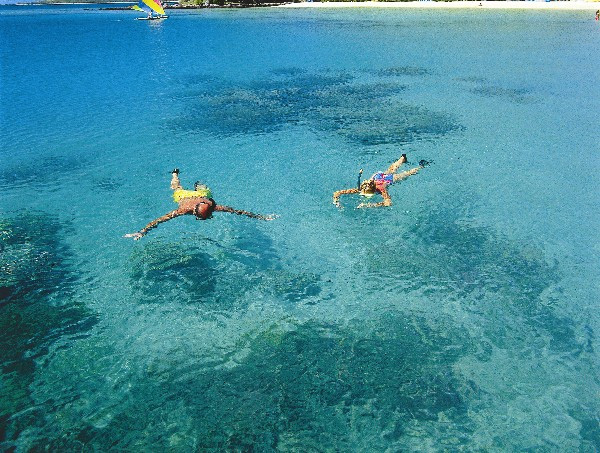AIRLIE BEACH, AUSTRALIA - Going down under the Great Barrier Reef while you’re Down Under is something most visitors put at the top of their “to-do list” while in Queensland.
The Reef, one of the world’s greatest natural wonders, is a sight to behold — either above or below the water. Pilgrim divers — around 5,000 annually — make the trek to the Reef, considered the Mecca of diving. Many, like Keith Payne, never leave.
Payne took his passion for the sport to the extreme and now owns a company called Pro Dive Whitsundays in Airlie Beach that offers dive trips to the Reef. Payne’s firm boasts one of the largest instructor training facilities in the world outside of the United States.
There are many places where diving is possible in Australia — like Townsville in Queensland and Cairns farther north — but Airlie Beach is where the Reef is located, so need we say more?

Above: The Great Barrier Reef is being threatened by global warming.
Payne says many “holiday” divers get their feet wet for the first time in the azure waters surrounding the Reef and almost all do fine, despite expressing initial panic.
“It’s totally normal for people to be apprehensive, but those concerns dissipate with time,” said Payne. “I’ve seen people out of shape come in here (to his dive shop) who were not very good swimmers, but did fine underwater. I’ve also seen very athletic types walk in who panicked and couldn’t concentrate underwater. It’s all a matter of relaxation.”
The biggest concern of rookie divers, according to Payne, is coming face-to-face with a shark. He just laughs. “We’ve never had a problem with sharks. Sharks are curious but nonaggressive. It’s only the Great Whites that don’t play by those rules.”
Payne’s company offers a five-day dive trip on one of Pro Dive’s two vessels, the Ocean Pro or the Oceania. The trip begins with a two-day dive course that sets scuba rookies on their way to their certification as a PADI (Professional Association of Dive Instructors) open water diver. The cost is about $450 (Canadian), which includes all meals on board and the use of dive equipment.
After the completion of two days of exams and pool training, it’s off to the outer portion of the Reef for the four mandatory training dives to gain certification, and then four extra dives for fun and experience.
Once in the water, dive students are drilled on various techniques for emergencies, maintaining buoyancy and ways to enjoy the underwater kingdom.
Once certified, the fun really begins for divers. Exploring the Reef is a chance to see some of the most beautiful marine life imaginable - turtles, stingrays and yes, even a shark. Don’t worry, the most common sharks in this area are tiny Reef Sharks which are more frightened of you than you are of them. For peace of mind, though, just don’t watch the movie Jaws before a scheduled dive.
What many don’t realize is that the Reef itself is alive. Coral is a living organism and is well worth a look for its colours and interesting shapes. Quality of visibility is usually never in question on the reef.
There’s even night dives and the Reef takes on a very different look. Corals open to expose their effervescent colours and the predatory animals that hide themselves during the day emerge to hunt and provide the opportunity for divers to view their habits. Disorientation is a problem at night, but really only adds to the thrill of the dive.
The sense of accomplishment that accompanies completing an open water scuba dive course is truly satisfying.